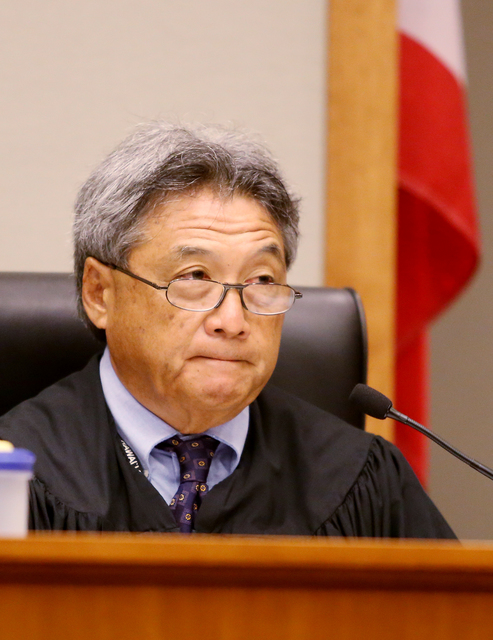A judge on Thursday cleared the way for a new round of hearings by the state Board of Land and Natural Resources on the proposed Thirty Meter Telescope near the summit of Mauna Kea.
In a status conference conducted by telephone in an empty courtroom, Hilo Circuit Judge Greg Nakamura instructed Richard Naiwieha Wurdeman, attorney for Mauna Kea Anaina Hou and several other appellants, to prepare an order vacating a May 5, 2014, ruling by Nakamura that the permitting process employed for the $1.4 billion observatory project by BLNR was valid and the appellants due process rights weren’t violated by the process.
“All we’re trying to do is move the case back to the board,” Nakamura said.
The conference itself was a formality. The state Supreme Court on Dec. 2 issued an opinion siding with Mauna Kea Anaina Hou and co-appellants Clarence Kukaukahi Ching, Flores-Case ‘Ohana, Deborah J. Ward, Paul K. Neves and Kahea: The Hawaii Environmental Alliance.
The group had appealed Nakamura’s ruling, arguing that BLNR’s approval of a Conservation District Use Permit to the University of Hawaii at Hilo for the project on Feb. 25, 2011, prior to a contested case hearing, was improper.
A contested case hearing was subsequently held, and the hearings officer issued his decision and order granting the permit on Nov. 30, 2012. BLNR issued its own findings and conclusions and issued the permit on April 12, 2013.
The high court ruled the process violated the due process rights of the appellants.
“Quite simply, the board put the cart before the horse when it issued the permit before the request for a contested case hearing was resolved and the hearing was held. Accordingly, the permit cannot stand,” Chief Justice Mark Recktenwald wrote in the court’s opinion.
A group of universities in California and Canada plan to build the observatory with partners from China, India and Japan.
The University of Hawaii subleases the land on Mauna Kea to TMT for the project. The planned construction site is on land considered sacred by some Native Hawaiians.
Scientists say the location is ideal for the telescope, which could allow them to see into the earliest years of the universe.
The university consortium attempted to start construction last year, but suspended efforts after protesters blocked the road to the summit.
Wurdeman has 10 days to prepare the order, but a second round of hearings on TMT permitting could take months, perhaps years. TMT officials have previously said they would continue the process.
Email John Burnett at jburnett@hawaiitribune-herald.com.



